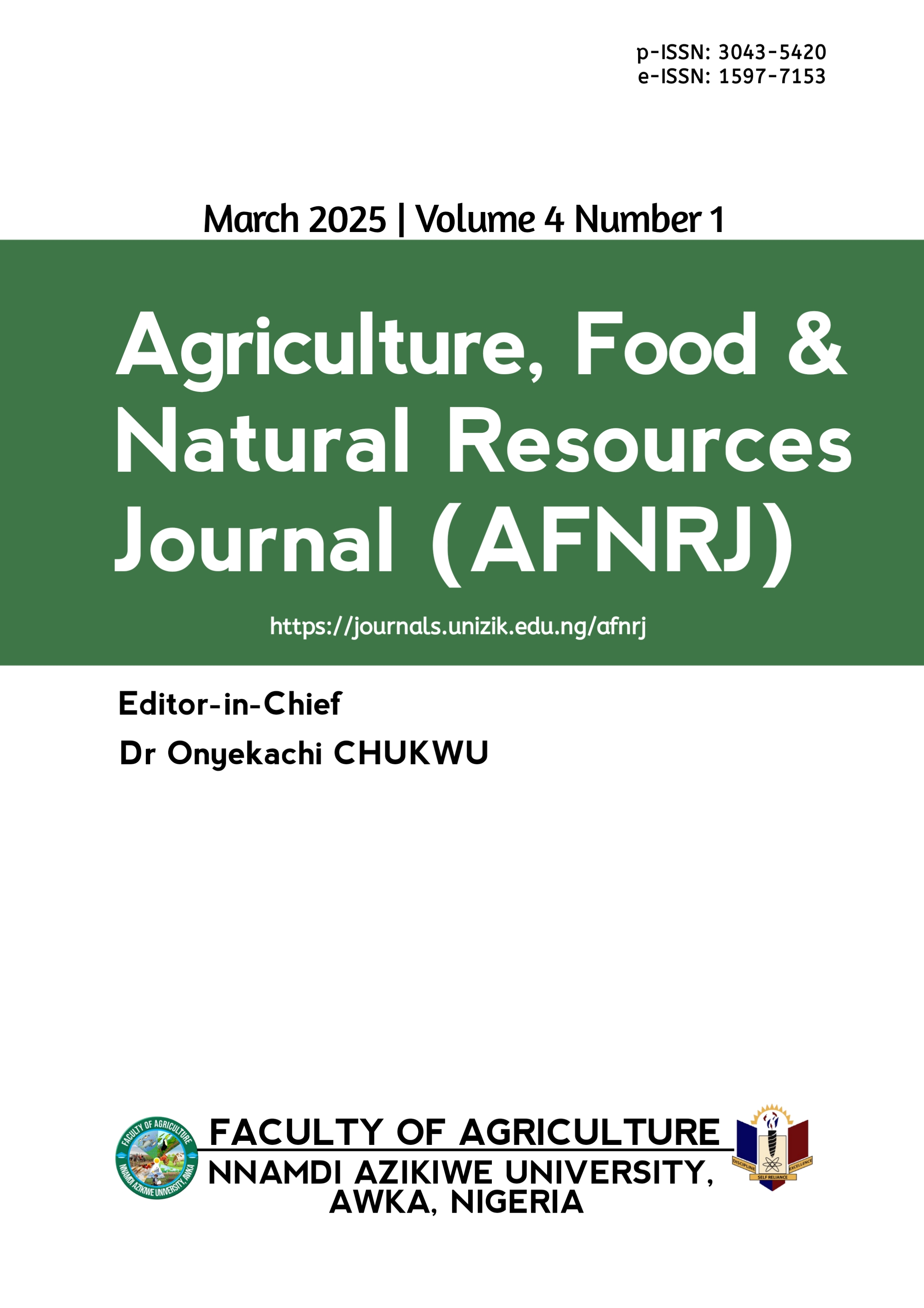Carbon sequestration potentials of selected tree species in University of Maiduguri campus, Maiduguri, Nigeria
DOI:
https://doi.org/10.5281/zenodo.15261152Keywords:
Biomass accumulation, Carbon sequestration, Climate change mitigation, Interspecies variationsAbstract
This study evaluated the carbon and carbon dioxide (CO2) sequestration potential of three species (Eucalyptus camaldulensis, Khaya senegalensis, and Syzygium cumini) at the University of Maiduguri Campus, using systematic random sampling across six transects. Data were collected using non-destructive methods to estimate biomass accumulation and carbon sequestration. Data on diameter, stem height, and age were compared with ANOVA. The annual CO₂ sequestration was correlated with DBH, height, and age. Results revealed significant interspecies variation: Khaya senegalensis sequestered the most carbon (359.69 kg) and CO₂ (1318.70 kg), whereas Syzygium cumini sequestered 94.54kg of carbon and 34.66 kg of CO₂/year as against Eucalyptus camaldulensis, which captured 161.70 kg of carbon and 16.94 kg of CO₂/year. Correlation analysis showed diameter as the strongest predictor of biomass and carbon sequestration, followed by stem height; tree age exhibited no consistent relationship. These findings highlight the critical role of species selection and structural traits in optimizing carbon capture while positioning Khaya senegalensis as a key species for climate mitigation in semi-arid regions. Further investigation into age-related sequestration dynamics is recommended to enhance long-term agroforestry strategies.
Downloads
Published
Issue
Section
License

This work is licensed under a Creative Commons Attribution 4.0 International License.
which permits unrestricted use, distribution, and reproduction in any medium, provided the original author and source are credited.
Authors retain the copyright of their published work in the AFNRJ.





